3 Simple Tactics for Fly Fishing Pocket Water
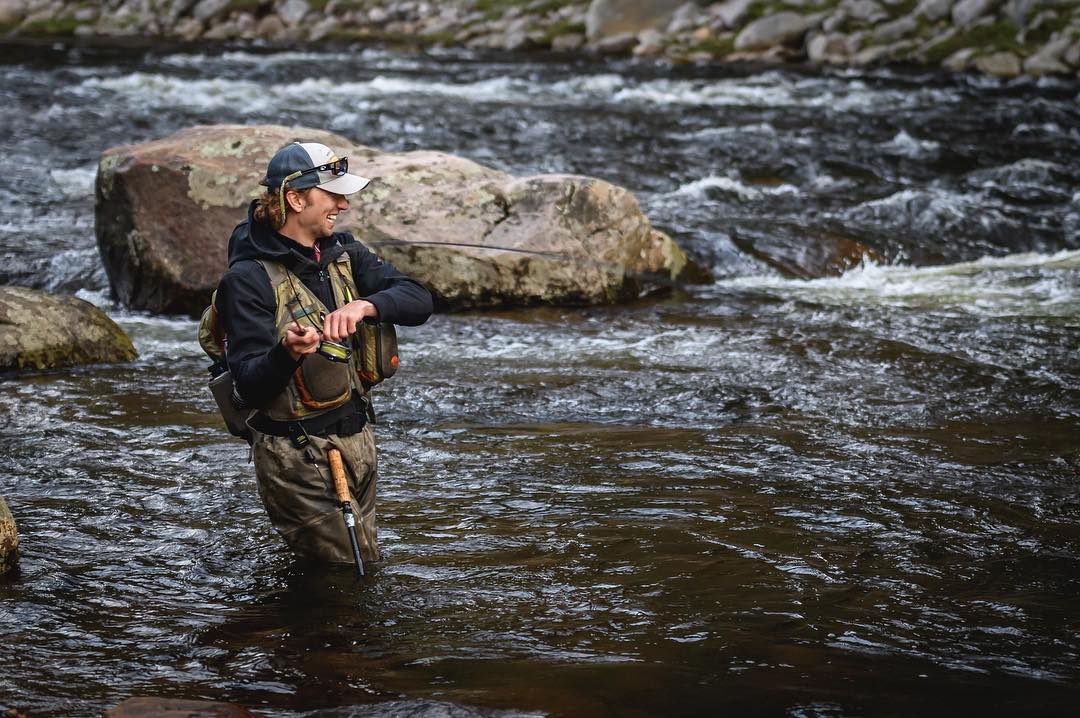
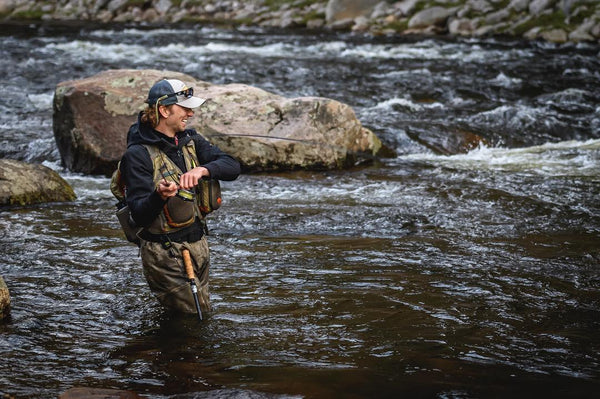
Photo by Greg Koch.
Pocket Water Can Be Some of the Most Exhilarating Waters to Fish
What makes a pocket water fishery are the boulders that block the general flow of the river, forming hydro-breaks where fish lie in wait in the darkness, ready to dart at a moment's notice for food.
As a trout guide, I can’t see myself guiding or fishing anywhere else during the peak season but on my home river in the Adirondacks, the West Branch of the Ausable. Here are some tactics I've picked up from guiding and fishing these waters that may help you next time you're on the water.
1. Make Sure That You Cover Water
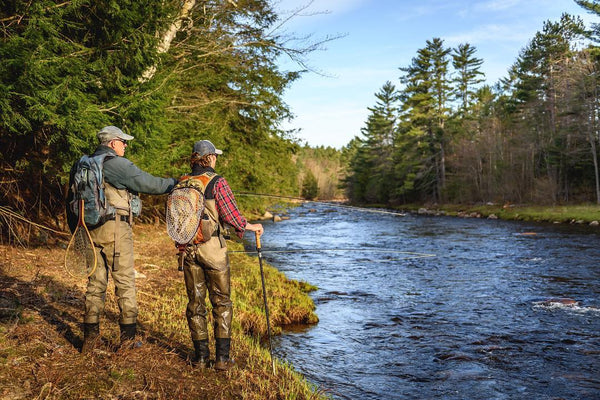
Photo by Greg Koch.
Take a few minutes to sit by the bank, relax, and watch the bugs and how the water is moving to plan your approach before you dive in and start casting. Having this patience will set you up for success.
The beauty of fishing pocket water is being able to see the hydro-breaks, which are pockets of water that are formed by boulders in the moving water.

To make it really simple (this is what I tell my clients when they are struggling to understand how to fish this type of water), if a fish is swimming in the river and wants to relax, where is it going to go? Into the fast water with few food opportunities or behind a rock to sit and wait for some food to come its way?
Trout Fly Fishing: 3 Bad Habits to Break
Fish are lazy by nature — they will only go for food if it is worth their energy. When fish are behind a boulder in the river, they are waiting in that “pocket” for the bugs/fish to drop into their area to eat. Those pockets can be the size of a basketball or the size of a Volkswagen.
When I’m fishing I’m always looking for the little nooks and crannies in the water that are between those pockets as well, targeting an actively feeding fish. The best way to do this is to methodically work and cover water.
The old saying still rings true: “You aren’t going to catch fish unless your fly is in the water."
2. Positioning Is Key
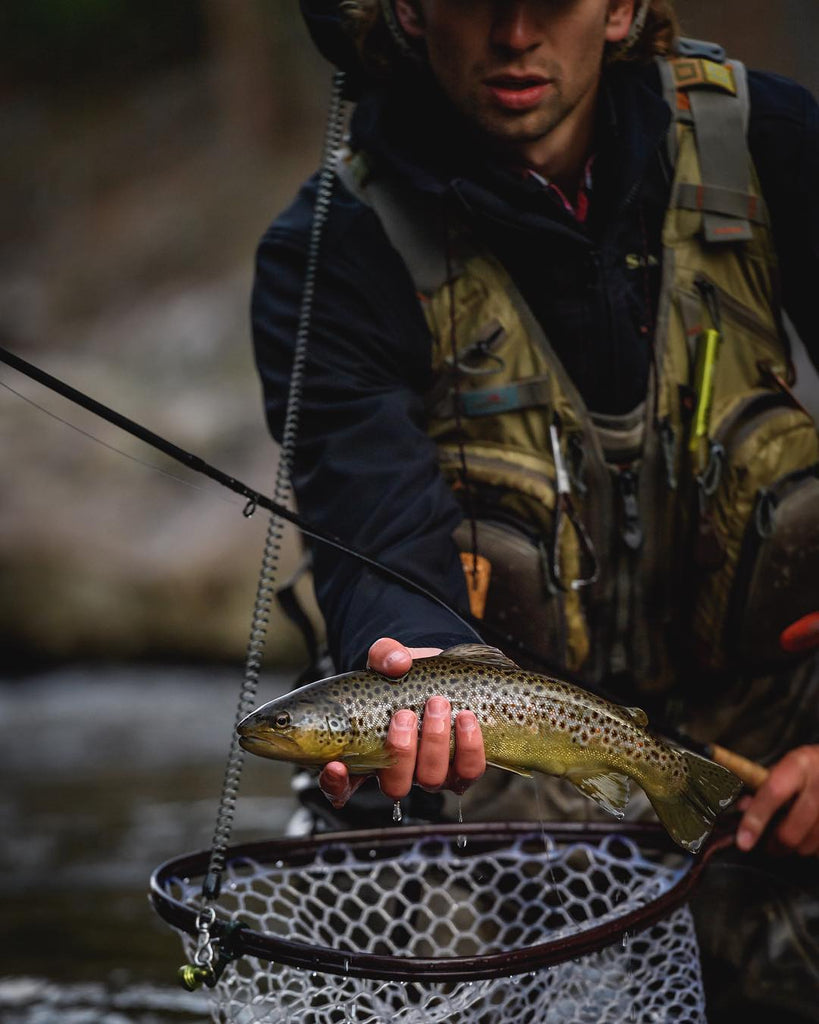
Photo by Greg Koch.
Picture this: you are casting to a brown trout that is making the slightest dimple as it comes up to eat a Hendrickson. You have some funky currents and you can’t go downstream and cast up because of the depth, and the micro currents are too much for you to line up perpendicular to the fish. What are you going to do? Take your time and move upstream to drop a reach cast.
As a guide, I tend to see people standing in awkward spots that won’t allow them to fish the hole properly. Make sure that you don’t go straight into the river, look for a few minutes and make a gameplan.
Always start on dry ground if the riparian area allows for it. Fish tight to the bank first, there could be fish five inches from the bank. You'll never know unless you cast there.
The Art of Stripping Streamers: Fly Fishing Tactics
When working pocket water, look at it like a piece of graphing paper. You have the first column and the first row. After that first column and the first row, you move to the second column and the second row, and so on.
When I was first learning how to position myself when I was a beginner fly angler in my early teens, it took me forever to not jump over the water right in front of me and go for the deeper hole where I thought the fish were. Think about it from an athletic point of view, slowing things down and learning the form only makes you faster in the long run: “slow is smooth and smooth is fast."
Granted, it sounds easier said than done but we are fly fishing and many of us chose this sport to be challenged by the casting and the entomology.
3. Getting the Flies Into the Slot or Down and Dirty
Photo by Greg Koch.
There are a ton of dry fly opportunities in these turbulent waters along with the majority of what you’ll be fishing with: nymphs.
One of the benefits of pocket water fishing is that you can throw an indicator (but not too big) on and fish it because its shape is broken up and obscured by the whitewater-like conditions. Don’t be afraid to add some weight with the nymphs, even when they have tungsten beadheads or lead-free wrap on it. You can be doing everything else right, but if the fly isn't getting deep enough, it will be harder and less likely for you to catch a fish.
The only way to know if you are getting down and dirty is if you are losing flies. Once you’ve lost a couple (or a ton) then take a little bit of weight off to bring the fly up a little in the water column. On the other hand though, I have had some wicked experiences on the West Branch of the Ausable with a size 8 Ausable bomber (BIG dry fly).
Even with the fish being contained in the small pockets, I’ve seen some really picky fish. Some fish may move a foot to get the fly or some won’t move more than two inches.
Follow This 5 Point Checklist for Better Czech Nymphing
My personal plan of attack though, is Czech nymphing. It is the most effective way to catch fish in this type of water because the flies are able to sink quickly and get into the zone, while being incredibly accurate.
When it comes to fly selection, it is important to have a few of the local patterns but the Nymph-Head Evolution Mayfly Pheasant Tail is one of the patterns that I have in my box at all times. I tend to lean towards olive for the color and keep all sizes in my fly box. Fish may get used to one pattern and size, but the first thing I do when changing flies is change the size. Sometimes that may mean going bigger!
Want More Content Like This?
Join the Flymen Mailing List at the Bottom of the Page!
About Schuyler Deeney:
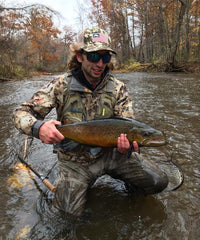 Instagram: @tricodeeney. Schuyler is a full-time fly fishing guide at The Hungry Trout resort in Wilmington, NY. Before moving up to the Adirondacks, he was throwing egg patterns from salmon and steelhead on numerous Lake Ontario tributaries. His first words were “fish” and “money” and was baiting hooks by two years old (seriously though). With his passion for fly fishing and conservation, he applied to SUNY Cobleskill for Fisheries and Aquaculture to better the environment. He is currently the Trout Unlimited president for the SUNY Cobleskill student chapter.
Instagram: @tricodeeney. Schuyler is a full-time fly fishing guide at The Hungry Trout resort in Wilmington, NY. Before moving up to the Adirondacks, he was throwing egg patterns from salmon and steelhead on numerous Lake Ontario tributaries. His first words were “fish” and “money” and was baiting hooks by two years old (seriously though). With his passion for fly fishing and conservation, he applied to SUNY Cobleskill for Fisheries and Aquaculture to better the environment. He is currently the Trout Unlimited president for the SUNY Cobleskill student chapter.
Where can you find Schuyler at the end of the day? When he isn’t in school, he is on the water chasing after some trout from the Catskills all the way up into the Adirondack mountain range. Or, at The Hungry Trout Fly Shop at the end of the day with a few friends and a bonfire talking about the river and whats to come.



Great advice
Thanks
Obey laws of nature,know your game,respect it,stalk it,catch it!!! All take time…right place right time!!!!
Good article, it is a technical type of fly fishing.
I live in CT near the Farmington River, just wondering if you have ever fished it and your thoughts on the river.
Rich
I go from catching trout to not catching them at all and I do what everyone else is doing that are catching fish but I still don’t what am I doing wrong, or am I using the wrong fly?
good stuff
Leave a comment